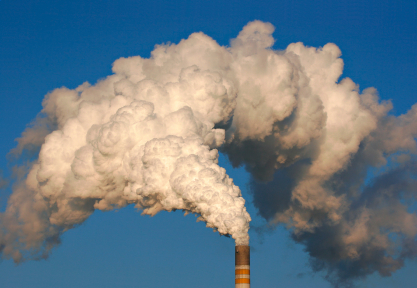I attended the celebration of the 40th anniversary of the Clean Air Act at EPA this past week.
It was a breath of fresh air (sorry) to hear so many speakers from industry as well as health groups and from across political divides to give concrete examples of how much good this landmark law has delivered for Americans. I arrived in Washington as a newly minted lawyer in 1970 and I have personally seen this progress happen.
In 1970 air pollution was recognized as a blight and a serious public health problem but aside from a handful of municipal ordinances and even fewer state programs, it was largely ignored.
The national pollution load was heavy.
In 1970, US sulfur oxides pollution was over 31 million tons per year. Now it is less than 11.5 million tons.
US hydrocarbon pollution was over 34 million tons per year. More than half of that from cars and trucks. Now it is less than 16 million tons.
Nitrogen oxides pollution was nearly 28 million tons per year. Now it is about 16 million tons.
Carbon monoxide pollution was over 200 million tons per year; nearly all from cars and trucks. Now it is less than 78 million tons.
These large cuts in pollution are all the more significant considering the fact that our economy grew so much from 1970 until now.
In 1970, US GDP was $3.8 trillion (2000 $). It is now $13.2 trillion, a 3.5 fold increase.
In 1970 there were 108 million vehicles on the road, driving about 1.2 trillion miles a year. In 2008 there were nearly 250 million vehicles on the road, driving 3 trillion miles a year.
In 1970, tailpipe controls were in their infancy. So much so that one car company met the government limit on pollutant concentration by adding an air pump to dilute its exhaust.
Back then, dilution as the solution to pollution was the preferred approach for SO2 at coal-fired power plants too. It took more than a decade to outlaw the practice of allowing power companies to build tall stacks instead of actually reducing emissions. Now SO2 scrubbers are in place at over half the nation’s coal plants. And if EPA is allowed to do its job, the remaining unscrubbed coal plants will either get controlled or shut down in the next handful of years.
In 1970 there were no controls on lead in gasoline. Thanks to the CAA lead is now banned here and countries around the world have followed our example
In 1970, the basic rule for preventing smog-forming hydrocarbon leaks from refineries was a requirement to paint storage tanks white, or floating roof tanks in some places. Today, that pollution from the chemical and refining industries has been cut in half.
There is no mystery about how this came about. Plain and simple, the Clean Air Act made it happen. The combination of programs for ambient air quality standards and emission performance standards made this cleanup occur. These two tools, complemented by the annual cap on SO2 emissions from the 1990 Act have proven their effectiveness. They work. They have made the air cleaner and have done it without hurting economic growth.
Without the Clean Air Act, EPA has recently estimated that today –
- 60 metro areas in the U.S. would have had higher total suspended particulate concentrations than Moscow
- 7 metropolitan areas would be worse than Bangkok
- 6 metropolitan areas would be worse than Bombay.
But the job is not finished. Pollution from power generation still shortens the lives of an estimated 13000 people per year and sickens many more. Many of our major cities still have air quality that is unhealthy. And of course, we have done nothing to address what might be called the mother of all pollutants, carbon dioxide.
As we see renewed claims from polluters that new EPA rules for the largest remaining pollution problems will cost jobs and raise energy prices, it is important to remember they said the same things about every rule EPA adopted in the past 40 years. They were wrong every time. Fortunately for all of us, past cleanup efforts went forward despite these claims. Let’s highlight these facts as we work to bolster EPA and state efforts today and secure continued support from Congress for this remarkable law.



